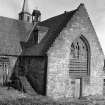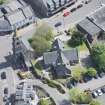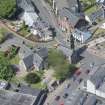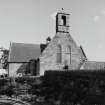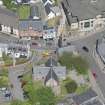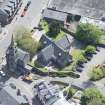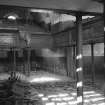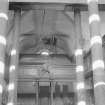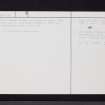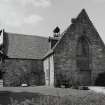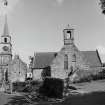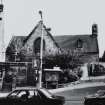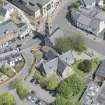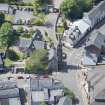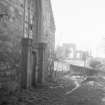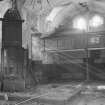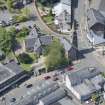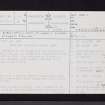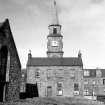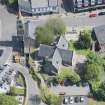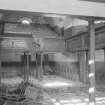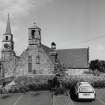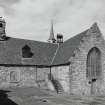Kirkintilloch, Cowgate, Old Church
Chapel (Medieval), Church (17th Century) (1644)
Site Name Kirkintilloch, Cowgate, Old Church
Classification Chapel (Medieval), Church (17th Century) (1644)
Alternative Name(s) Auld Kirk Museum; Kirkintilloch, Old Parish Church Of St Mary
Canmore ID 45220
Site Number NS67SE 3
NGR NS 65225 74079
Datum OSGB36 - NGR
Permalink http://canmore.org.uk/site/45220
- Council East Dunbartonshire
- Parish Kirkintilloch (Strathkelvin)
- Former Region Strathclyde
- Former District Strathkelvin
- Former County Dunbartonshire
NS67SE 3 65217 74078
(NS 6522 7407) Ch (NR)
OS 1:10,000 map, (1980)
Auld Kirk Historical Centre (NAT)
OS 1:1250 map, (1966)
A chapel, dedicated to the Virgin Mary and mentioned in 1379 stood on the spot now occupied by the present parish church, built in 1644. Also dedicated to St Mary, it replaced the previous parish church, dedicated to St Ninian, noted on NS67SE 4.
Orig Parch Scot 1851; G Chalmers 1890; T Watson 1894
This church is in a very bad state of repair and is not now in use, a new parish church having been built 1912-14 at NS 6547 7387.
Visited by OS (J F C) 19 February 1954; Information from the Kirkintilloch Herald 16 September 1914.
The Old Parish Church of St Mary, now a museum (HBD list No. 1) is cruciform on plan, the four gables being crowstepped; it has a modern museum doorway and approach steps. The walls, once harled, were picked clean in 1890 when various renovations were carried out.
G Hay 1957.
NMRS REFERENCE
Built:- 1644. Repaired:- 1840
Non-Guardianship Sites Plan Collection, DC28114- DC28121, 1943 & 1950.
Measured Survey (1945)
Drawings by Stanislaw Tyrowicz for the National Buildings Record Scottish Council c1945.
Photographic Survey (1955)
Photographic survey by the Scottish National Buildings Record in 1955.
Field Visit (June 1971)
Kirkintilloch, Old Parish Church NS 652 740 NS67SE 3
The old parish church of Kirkintilloch, built in 1644, stands on the site of the medieval chapel of the Virgin Mary.
RCAHMS 1982, visited June 1971
(OPS 1851-5, i, 49; Watson 1894, 15, 49; Hay 1957, 255)
Publication Account (2009)
St Mary’s church, known as the Auld Kirk (NS 6521 7407; Category A-listed, figs 5 & 29.3)... The Auld Kirk at Kirkintilloch was built in the shape of a Greek cross, but had traditional Scottish crow-stepped gables and may have been built with stones from the ruins of the nearby castle. By 1733 it was mentioned as having a slate roof. In the 1830s, prior to major repairs, it held around 800 persons. In the eighteenth century the kirk saw various secessions. In 1735 the Reverend William Fleming was appointed as minister for Kirkintilloch by the Earl of Wigtown, the patron, against the wishes of the parishioners, a number of whom attended the secession church of Ebenezer Erskine in Stirling. In 1765 they established the first secession congregation in Kirkintilloch, known as the Kirkintilloch Burgher Congregation, and a few years later built a church to the east of Cowgate adjacent to Back Causeway (fig 29.10). This building survived until the 1960s.
Information from ‘The Scottish Burgh Survey, Historic Kilsyth: Archaeology and Development’ (2009).
































